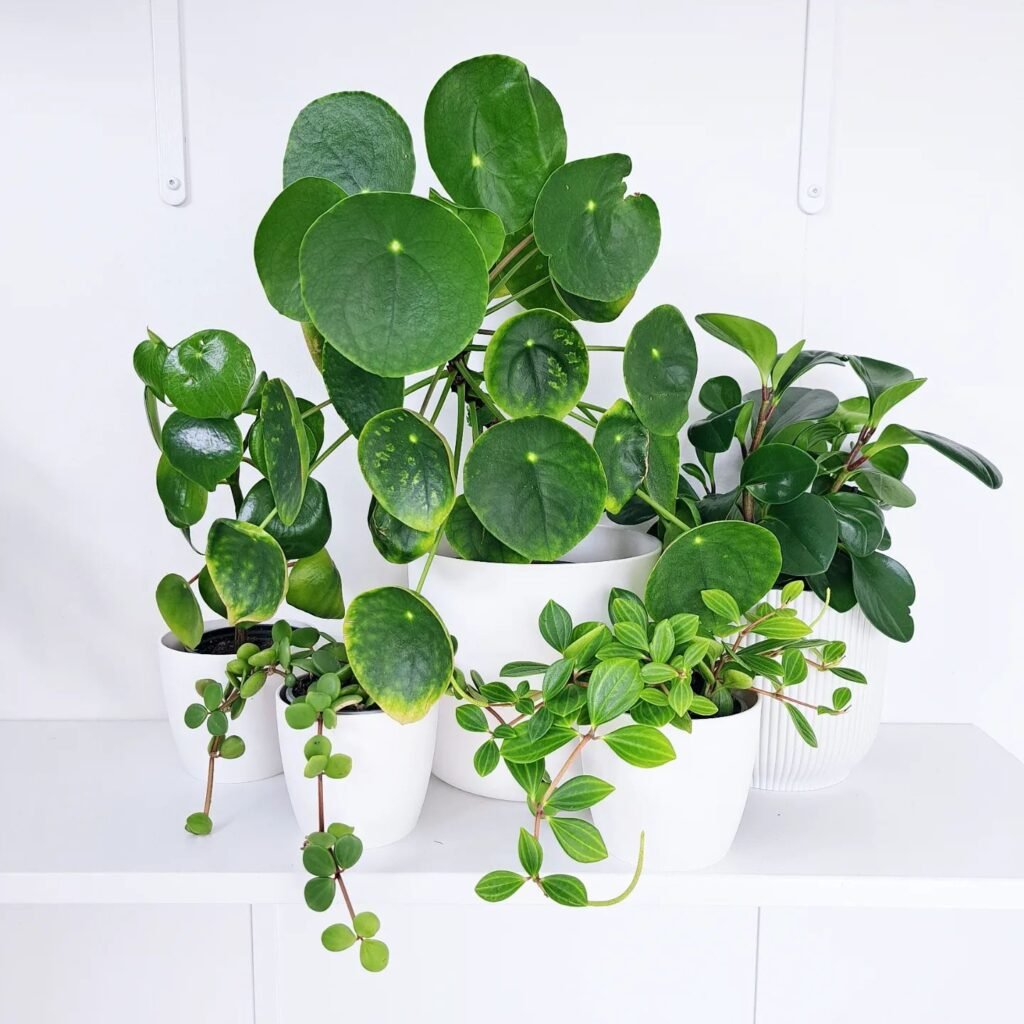Have you heard about the new trend of growing plants inside homes in the UK? It’s becoming a favourite hobby for lots of people. This is because looking after plants and bringing a bit of nature into our homes is really rewarding. One plant that everyone seems to love is the Peperomia Polybotrya, also known as Raindrop Peperomia. It’s special because it has shiny leaves shaped like raindrops and it’s pretty easy to look after.
Appearance of Peperomia Polybotrya (Raindrop)

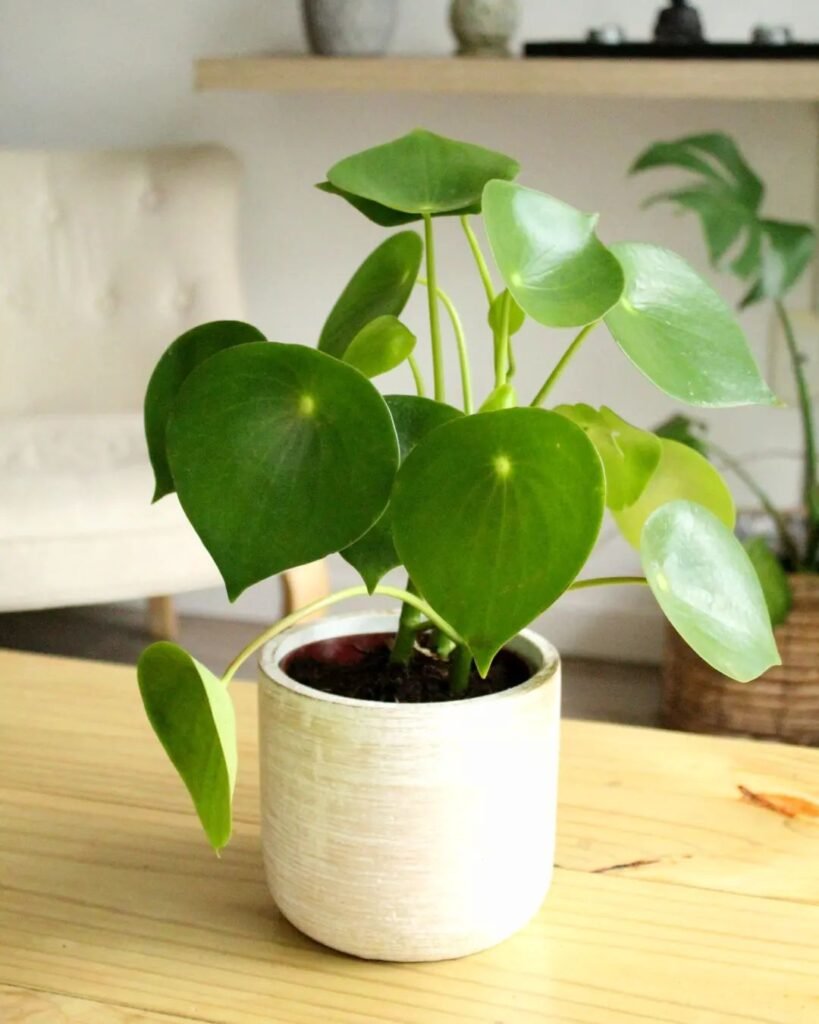
The Peperomia Polybotrya, commonly referred to as the Raindrop Peperomia, is a plant that boasts unique and eye-catching characteristics. When you first glance at it, you’ll notice its leaves, which are not only thick and glossy but also strikingly shaped like raindrops, giving the plant its endearing name. This distinctive shape isn’t just for show; the leaves are designed to hold water, making them appear plump and succulent-like. Depending on where and how they’re grown, the leaves might vary in size, the depth of their green hue, and their overall appearance. Typically, under optimal conditions, this lovely plant can grow to a height of 12-15 inches. Beyond its attractive foliage, the Raindrop Peperomia may also surprise you with its ability to produce delicate and sweet-smelling flowers on occasion.
For someone new to gardening, it’s a delightful option due to its visually pleasing attributes and the practical aspect of its water-storing leaves. This means it’s somewhat forgiving if you occasionally forget to water it. The variability in its leaf appearance based on its environment adds a bit of intrigue, as your plant can have its unique look within the general characteristics of the species. Whether you’re looking to add a touch of green to your space or start a collection of interesting plants, the Raindrop Peperomia is a charming choice that promises not only to beautify your surroundings but also to spark conversations about its unique raindrop-shaped leaves and resilient nature.
 The Peperomia Polybotrya, also known as the Raindrop Peperomia, belongs to a vast family with over 1000 species? It’s perfect for any indoor garden style. Despite its tropical roots, it grows well even in less humid conditions, making it a great choice for indoor spaces.
The Peperomia Polybotrya, also known as the Raindrop Peperomia, belongs to a vast family with over 1000 species? It’s perfect for any indoor garden style. Despite its tropical roots, it grows well even in less humid conditions, making it a great choice for indoor spaces.
Light Requirements for Peperomia Polybotrya
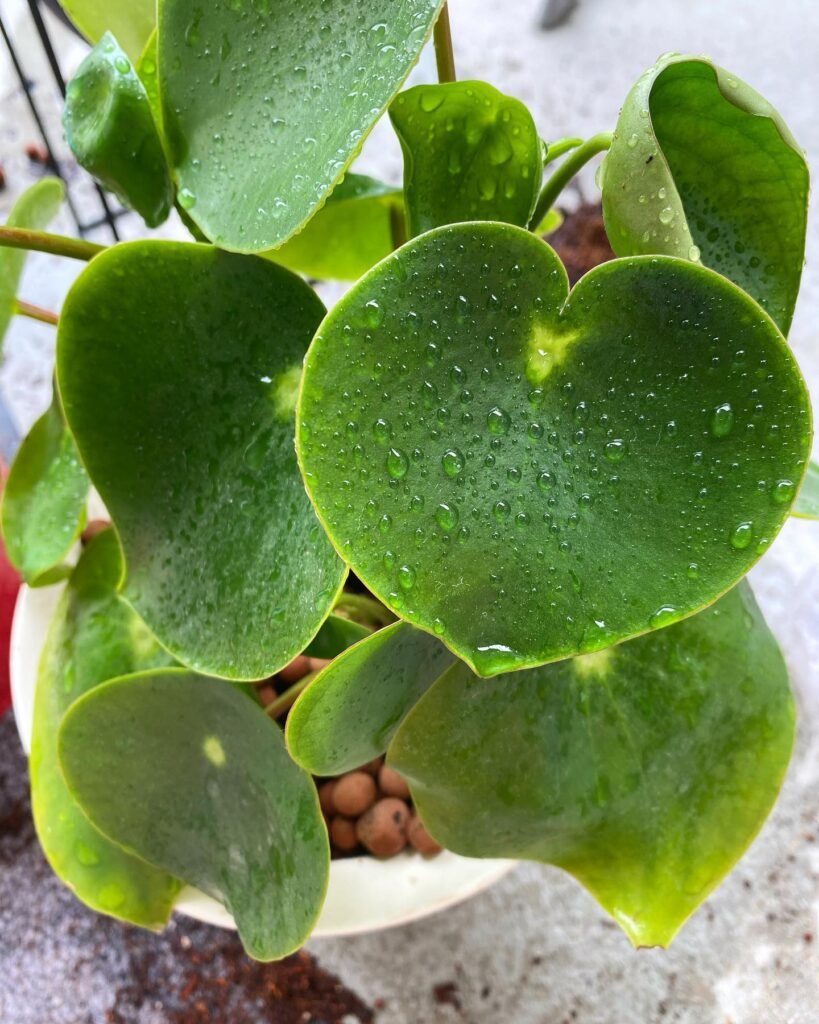

Peperomia Polybotrya, also known as Raindrop Peperomia, thrives in bright, indirect light. As a native of the tropical regions, this plant is accustomed to filtered light that replicates the conditions of the jungle floor. When providing light for your Peperomia Polybotrya, it is important to avoid direct sunlight, as it can burn the leaves and cause damage to the plant.
For optimal light conditions, consider placing your Peperomia Polybotrya near north-facing windows. These windows typically provide bright, indirect light that is gentle on the leaves. If you have east or west-facing windows, they can also be suitable as long as the light is not too strong. However, it is crucial to keep your plant a few feet away from southern windows, as the intense light can be too harsh. Additionally, ensure that the plant is not placed in direct line-of-sight of the window, as this can cause the leaves to overheat and wilt.
If your indoor space has limited natural light, you have the option of using grow lights to provide the necessary lighting for your Peperomia Polybotrya. These artificial lights can simulate the brightness and spectrum of natural sunlight, giving your plant the ideal conditions it needs to thrive. When using grow lights, make sure to position them a suitable distance above the plant and follow the manufacturer’s instructions for optimal results.
Remember, maintaining the right balance of light is essential for your Peperomia Polybotrya’s overall well-being. Too little light can result in leggy growth and dull leaves, while excessive light can cause leaf scorching and discoloration. By following these light requirements, you can create an ideal environment for your Raindrop Peperomia to thrive.

Watering Tips for Peperomia Polybotrya (Raindrop)


Proper watering is crucial for the health of Peperomia Polybotrya. As a plant with water-storing leaves, it is important not to overwater it. Allow the soil to dry out before watering again. Stick your finger in the soil to check if the top 1-2 inches are dry before watering.
During the spring and summer, watering once a week is usually sufficient. In winter, reduce watering to every 10 days. It is important to water thoroughly until water drains out of the pot’s bottom, but be sure to remove any excess water from the tray to prevent standing water.
Signs of overwatering include rotting stalks, yellowing or wilting leaves, and waterlogged soil.
Do not let Peperomia Polybotrya’s feet sit in water, as they are prone to root rot. Instead, water thoroughly and allow the excess to drain away.

Fertilizing and Soil for Peperomia Polybotrya
Peperomia Polybotrya, also known as Raindrop Peperomia, thrives with regular fertilization and the right soil conditions. Providing the necessary nutrients and ensuring proper drainage are key to promoting healthy growth in this stunning indoor plant.
Fertilizing: To support the growth of Peperomia Polybotrya, it is recommended to fertilize the plant monthly during the growing season. Choose a balanced houseplant fertilizer and carefully follow the instructions on the packaging. This helps provide the essential nutrients the plant needs for vibrant foliage and potential blooming.
Soil: Peperomia Polybotrya prefers a well-draining soil mixture to prevent overwatering and promote healthy root development. One suitable option is African Violet soil, which provides the necessary drainage while retaining enough moisture for the plant. Another option is a blend of 50% perlite and 50% peat moss, which helps create a light and airy mixture that allows excess water to flow through easily.

Pruning and Maintenance for Peperomia Polybotrya
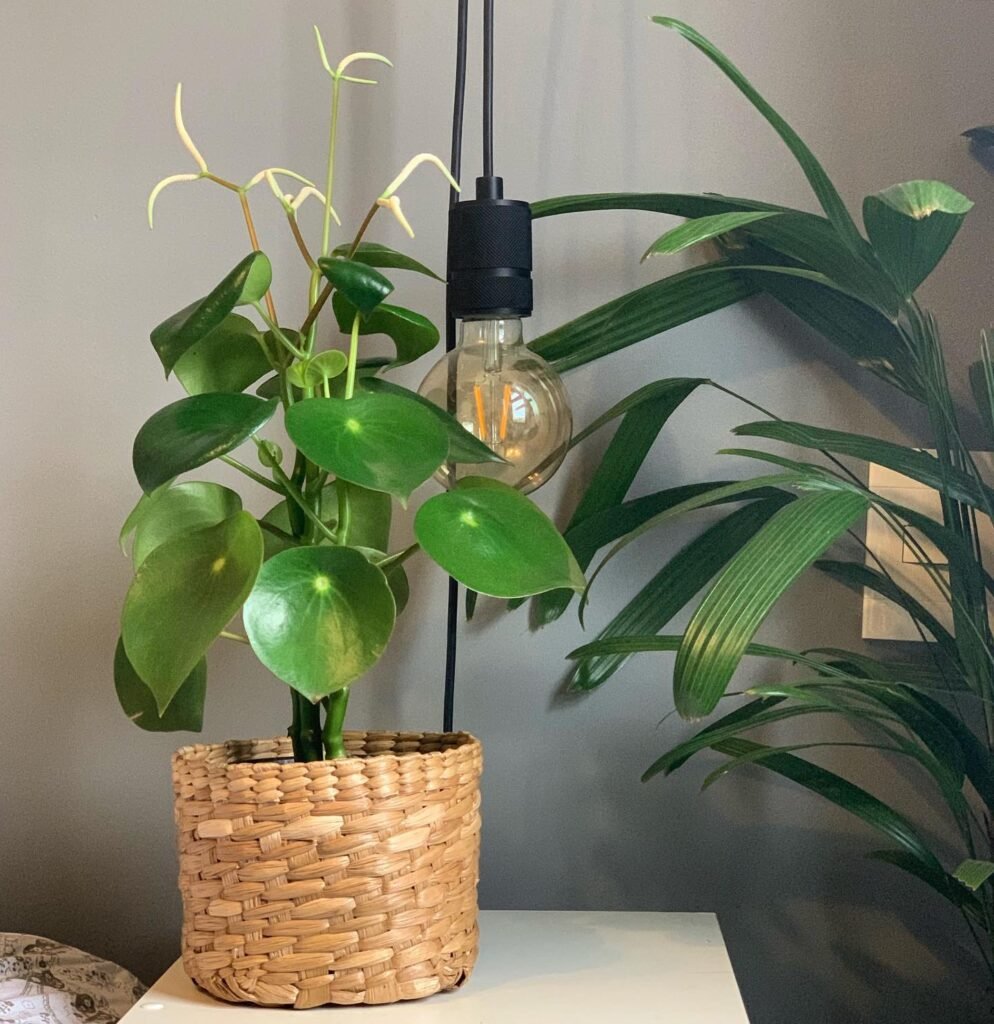
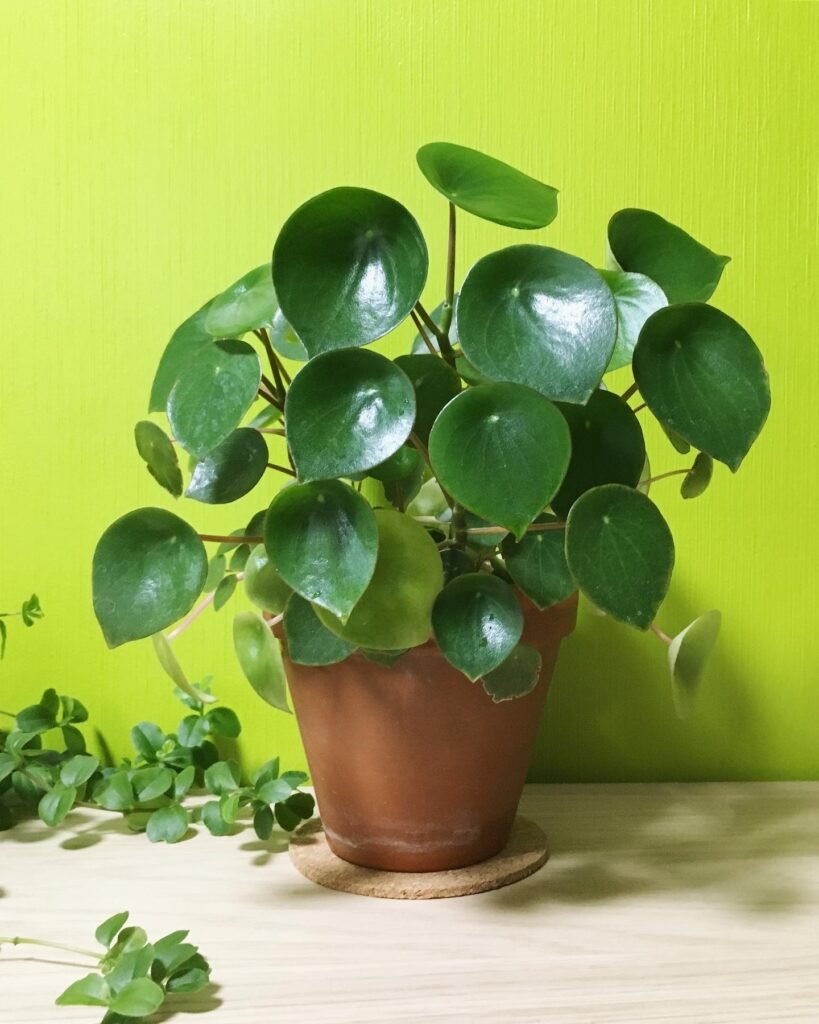
Looking after your Peperomia Polybotrya doesn’t have to be complicated, especially when it comes to pruning and keeping it in tip-top shape. This lovely plant doesn’t ask for much trimming, but a bit of occasional snipping can keep it looking neat and tidy, getting rid of any leaves that have seen better days. Make sure you use clean shears for pruning to avoid introducing any unwanted pests or diseases.
For the day-to-day care of your Raindrop Peperomia, a few simple steps can make a big difference. Giving your plant a little twist around its pot every few weeks ensures it grows evenly and doesn’t lean too much towards one direction, chasing the light. It’s also a good idea to keep an eye out for any unwelcome guests like red spider mites or mealybugs that might fancy making a home amongst its leaves. A quick check and prompt action can keep your plant healthy.
Remember, taking a moment now and then to care for your Peperomia Polybotrya can really pay off, helping it stay lush and lovely for a long time to come.

Propagating Peperomia Polybotrya (Raindrop)

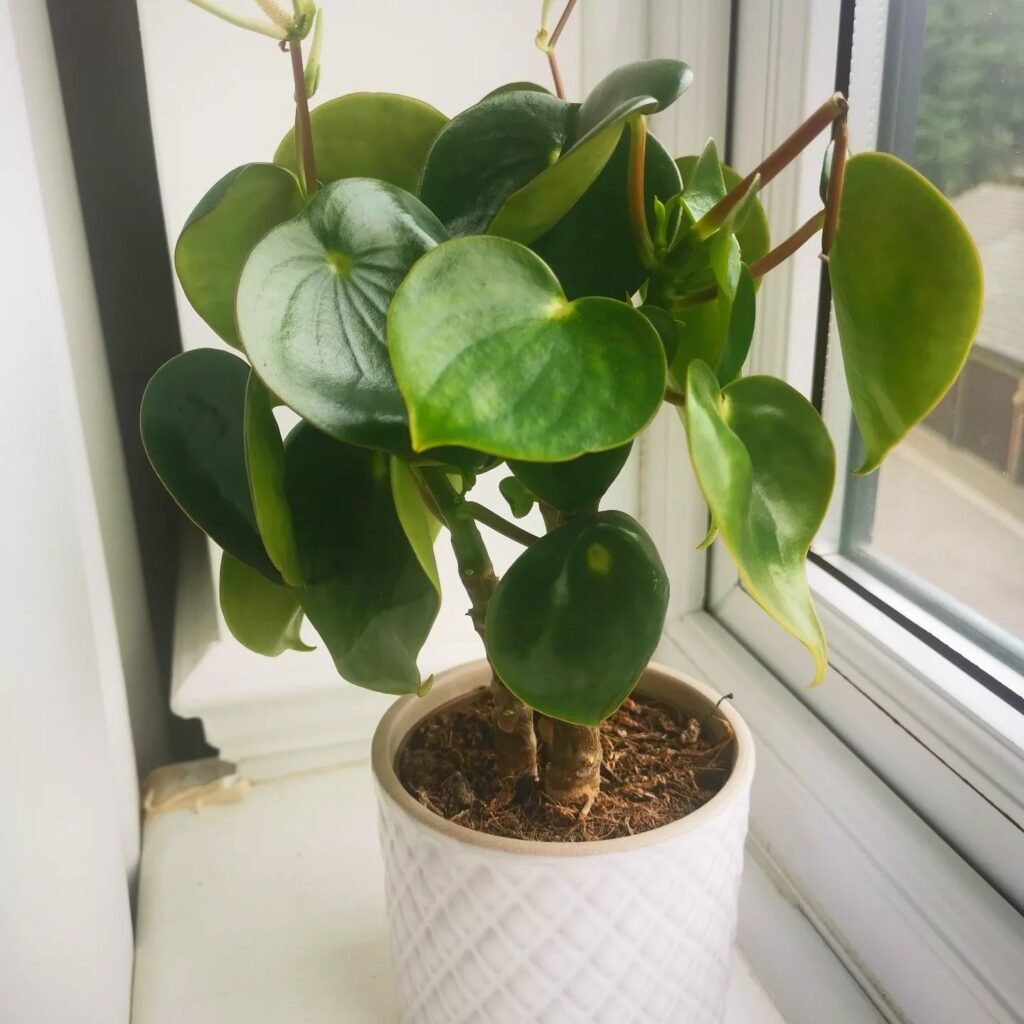
Propagating Peperomia Polybotrya is an exciting way to expand your plant collection or share the joy of this beautiful houseplant with others. There are two popular methods to propagate this Raindrop Peperomia: stem cuttings and leaf cuttings.
Stem Cuttings:
- During the growing season, select a healthy stem from your Peperomia Polybotrya that is around 8cm long.
- Remove the bottom half of the leaves from the stem, ensuring you have a bare stem at the bottom.
- Place the stem cutting in water, making sure the water level covers the bare stem.
- Keep the cutting in a bright location with indirect light and change the water every few days to prevent bacterial growth.
- After a few weeks, roots will start to develop. Once the roots are at least an inch long, carefully transplant the cutting into a pot filled with a well-draining soil mix.
- Place the pot in a warm and bright spot, and continue to care for it as you would for a mature Peperomia Polybotrya.
Leaf Cuttings:
- Take a mature leaf from your Peperomia Polybotrya and cut it in half.
- Prepare a tray or pot with a mixture of perlite and peat-free compost.
- Insert the leaf cuttings into the mixture, burying the cut end slightly.
- Ensure the cuttings receive indirect light and maintain a humid environment by covering them with a transparent plastic bag or using a humidity dome or misting regularly.
- After a few weeks, you will notice tiny plantlets emerging from the leaf cuttings.
- Once the plantlets have developed roots, gently transplant them into individual pots.
Remember to be patient during the propagation process, as it may take a few weeks for roots and new growth to develop. With proper care, your propagated Peperomia Polybotrya will thrive and brighten up your space.

Repotting Tips for Peperomia Polybotrya


Peperomia Polybotrya, also known as Raindrop Peperomia, does not require frequent repotting. It is recommended to repot the plant every three to four years or when it outgrows its current pot.
When repotting Peperomia Polybotrya, it’s important to choose a well-draining potting mix to ensure proper moisture levels. A mixture of perlite and peat moss can be an ideal option. Additionally, select a container that is one size larger than the current pot, allowing room for the plant to grow.
Avoid using a pot that is too large, as it can retain excess moisture and lead to root rot. It’s crucial to maintain proper drainage to prevent waterlogged soil. When repotting, handle the plant with care to avoid causing damage to the fragile root system.
Common Problems for Peperomia Polybotrya
Peperomia Polybotrya, also known as Raindrop Peperomia, is generally a resilient and easy-to-care-for plant. However, like any living organism, it can face some common problems that may require attention and care. The most common issues that Peperomia Polybotrya may encounter are related to pests, diseases, and improper watering.
Pests
Pests such as mealybugs and red spider mites can infest Peperomia Polybotrya and cause damage to its leaves. To keep your plant healthy, it is important to regularly inspect the leaves for any signs of pest infestation. If you notice pests, a gentle wipe with a damp cloth can help remove them. Alternatively, you can use neem oil or a soapy spray to treat the plant. Make sure to follow the instructions on the product label for safe and effective use.
Diseases
While Peperomia Polybotrya is generally resistant to diseases, overwatering can lead to root rot, which is a common issue for indoor plants. It is crucial to ensure that the soil is well-draining and not overly moist. Signs of overwatering include yellowing or brown edges on the leaves, brown roots, and yellow, curled leaves. Adjust your watering regime accordingly to prevent waterlogged soil and maintain the health of your Peperomia Polybotrya.
Improper Watering
Overwatering and underwatering are common problems for houseplants, including Peperomia Polybotrya. The key is to find the right balance. Always allow the top 1-2 inches of soil to dry out before watering again. Stick your finger into the soil to check for dryness. When the soil feels dry, it’s time to water your plant. Remember, consistency is key, and it’s better to underwater slightly than overwater. Maintain a regular watering schedule, and adjust it based on the temperature and humidity of your environment.
By being vigilant in inspecting your Peperomia Polybotrya, providing proper care, and addressing any problems promptly, you can enjoy a healthy and thriving plant that will bring beauty and joy to your indoor space.
 The Peperomia Polybotrya, known for its raindrop-shaped leaves, is nicknamed “Coin Leaf” for their striking resemblance to coins. This plant isn’t just a pretty addition to your home; it’s also known to be a symbol of good luck and prosperity in many cultures. Adding one to your space might bring not just greenery but also a spot of fortune!
The Peperomia Polybotrya, known for its raindrop-shaped leaves, is nicknamed “Coin Leaf” for their striking resemblance to coins. This plant isn’t just a pretty addition to your home; it’s also known to be a symbol of good luck and prosperity in many cultures. Adding one to your space might bring not just greenery but also a spot of fortune!
Pets and Peperomia Polybotrya
The Peperomia Polybotrya, more affectionately known as the Raindrop Peperomia, stands out not only for its unique beauty but also for its safety around pets and humans. This plant is completely non-toxic, meaning that if it happens to be nibbled on, there’s no need for alarm as it poses no significant risk. However, it’s wise to place it somewhere beyond the easy reach of curious pets. The reason for this is straightforward: while a small taste won’t harm them, indulging in larger amounts of the plant could potentially upset their stomachs.
It’s comforting to know that you can keep such a lovely plant in your home without worrying about the safety of your furry companions or young children. Nonetheless, taking this simple precaution of positioning your Raindrop Peperomia out of paws’ and hands’ reach is a sensible step. This not only protects your plant, allowing it to thrive and grow without being treated like a snack, but it also helps to prevent any unnecessary digestive discomfort for your pets. This aspect makes the Raindrop Peperomia an excellent choice for plant enthusiasts who are also pet owners, combining beauty and practicality in one non-toxic package.
Helpful Videos about Peperomia Polybotrya (Raindrop)
I’m excited to share with you a handpicked series of videos all about the Peperomia Polybotrya, commonly known as the Raindrop Peperomia. Designed with beginners in mind, this collection breaks down the care essentials into manageable, easy-to-understand segments. From ensuring your Raindrop Peperomia thrives to keeping it in tip-top condition, these videos are tailored to help you every step of the way. Whether you’re new to the world of gardening or looking to expand your plant care knowledge, this series is here to guide you in maintaining the health and beauty of your cherished plant.
- Peperomia polybotrya (Raindrop Peperomia) Houseplant Care
FAQ about Caring for Peperomia Polybotrya (Raindrop)

Curious about the best way to look after your Peperomia Polybotrya, also known as Raindrop Peperomia? Delve into my comprehensive FAQ for all the top tips on caring for your plant. Whether it’s finding the perfect lighting, mastering the watering schedule, or general upkeep, I’ve compiled everything you need to help your Raindrop Peperomia thrive.
Peperomia Polybotrya, commonly known as Raindrop, is a compact, evergreen perennial known for its shiny, raindrop-shaped leaves. Native to tropical environments, it is a popular houseplant in the UK due to its low maintenance needs and attractive foliage.
It thrives in bright, indirect light. In the UK, a north or east-facing window is ideal. Direct sunlight should be avoided as it can scorch the leaves.
This plant prefers a stable temperature between 18°C to 24°C. Avoid placing it in draughty areas or near radiators, which can cause stress.
Water when the top inch of soil feels dry to the touch. Over-watering can lead to root rot, so ensure the pot has good drainage. In the UK, watering may be less frequent due to cooler indoor temperatures.
Yes, it enjoys moderate to high humidity. In dryer UK homes, especially during winter, use a pebble tray or a humidifier to increase moisture in the air.
Repot in spring every 2-3 years or when roots outgrow the pot. Use a well-draining potting mix and a pot slightly larger than the current one.
A well-draining, peat-based potting mix is ideal. You can add perlite or sand to improve drainage.
Prune in spring or early summer to remove any dead or yellowing leaves and to encourage bushier growth. Use clean, sharp scissors.
Prune in spring or early summer to remove any dead or yellowing leaves and to encourage bushier growth. Use clean, sharp scissors.
Signs include yellowing leaves, soft and mushy stems, and dropping leaves. If noticed, reduce watering and check if the pot ensures proper drainage.
Yes, it can be easily propagated from leaf cuttings. Place a healthy leaf with a petiole in water or soil until roots develop.
Common pests include spider mites and mealybugs. Treat infestations early with neem oil or insecticidal soap.
Leaf curl can be caused by underwatering, low humidity, or pest infestation. Adjust care accordingly after identifying the cause.
No, it is non-toxic to cats and dogs, making it a safe choice for pet owners.
Slow growth can be due to low light, under-fertilization, or being pot-bound. Ensure adequate light, feed during the growing season, and repot if necessary.
It can survive in low light but prefers bright, indirect light for optimal growth. In very low light, growth may slow, and leaves may lose their vibrant colour.
While not known for its flowers, providing optimal care—adequate light, proper watering, and seasonal fertilization—can encourage the occasional appearance of its small, spike-like flowers.
In summer, it can be placed outdoors in a shaded spot but must be brought inside before temperatures drop below 15°C.
I trust this guide has set you on the right path to becoming an expert in caring for your Peperomia Polybotrya. Should you have any more questions, feel free to drop them in the comments below, and I’ll get back to you. Remember, we all start from square one, and there’s always something new and fascinating to learn about your plants.

